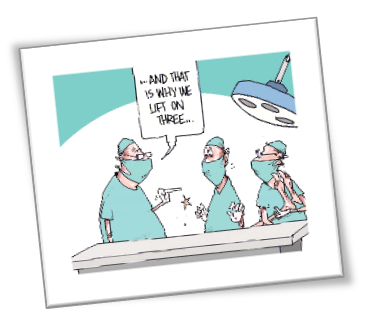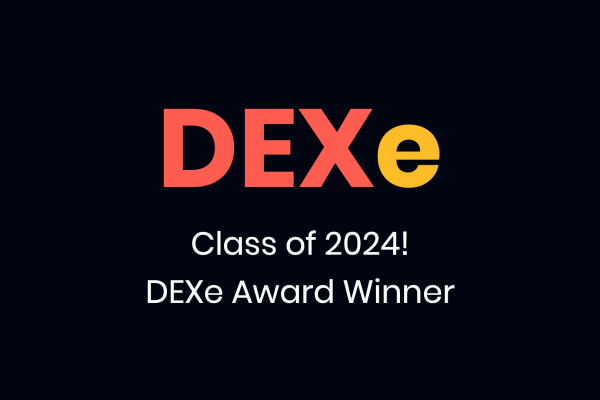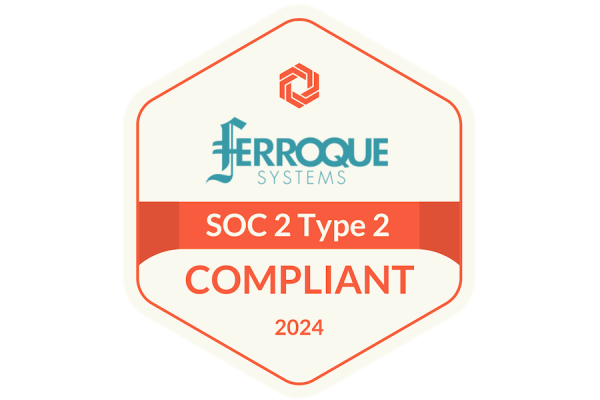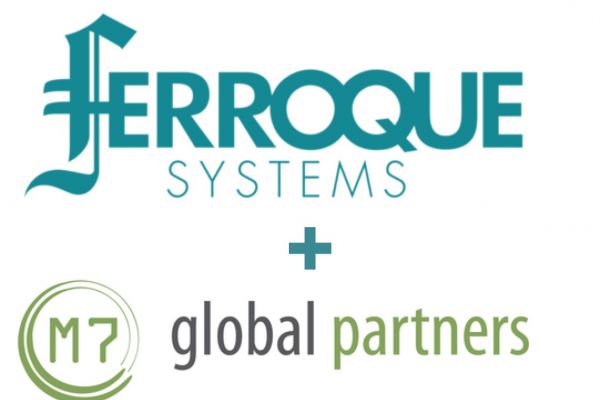
The Artful Science of Professional Services Consulting
Introduction
Consulting has long been a mainstay across many industries, including technology consulting, business consulting, and political consulting, just to name a few. Consulting has such prevalence across a range of industries because the customer value proposition is very high: consultants provide a strong blend of a specific industry-focused skillset, a big-picture perspective that provides a basis for comparison, and a wealth of relevant market experience. All of these skillsets enable consultants to provide services to their customers that balance academic knowledge with practical real-world know-how. This blog article will focus on technology consulting.
Ferroque Systems is a leader in technology consulting, and over our years of customer engagements we have worked with countless other consultants, and while we obviously do not remember every consultant, we do remember the exceptional ones. This blog will highlight some of the key distinctions that made those consultants stand out from their peers, based upon our years of observations and experience.
Dispelling a Common Myth
Straight away, understand that technology consulting is a blend of art and science; consultants must have deep technical skills across a range of related technologies, be able to communicate solutions to a wide-ranging audience that includes technical and non-technical people, and organize efforts to accomplish tasks in a predictable and timely manner. Although it is well-known that the vast majority of project failures are caused by non-technical issues, most customers tend to focus on technical skills when reviewing potential consulting candidates; i.e. most customers focus on the science but not the art.
Over the course of my career, outside of work I have done (and still do) a few hobbies, including triathlon, and I have found a few truisms to be relevant in consulting. Triathlon is a race that involves non-stop swimming, cycling, and running (in that sequence), in various distances. One truism (especially in long-distance triathlon) is “You can’t win the race in the swim, but you can lose it”; i.e. having a great swim wherein you exit the water a few minutes before your competition does not necessarily mean you will win the overall race, but a very poor swim almost always means you will lose. Applied to consulting, having great technical skills does not make someone a good consultant, but poor technical skills render someone a poor technology consultant.
This highlights one of the most common misunderstandings, in thinking that a good technician is a good technology consultant. A technician provides solid technical expertise but is often not effectively communicating with a non-technical audience and lacks situational awareness and various other soft skills required of a good consultant. I (and I am sure many readers) have worked with very smart technical folks who operate in a consultative capacity but who are very challenging to work with for various non-technical reasons, and often deliver a fairly poor customer experience. In the modern economy, customers often engage technology consultants to offload responsibility as much as for technical expertise and expect a consultant (or consulting team) to deliver a turnkey experience.
The Right Recipe
 It is a given that a good technology consultant must possess solid technical expertise; beyond that, fulfilling modern customer expectations requires a well-rounded skillset. There are countless skills that can be included in being considered well-rounded; for the purpose of this blog, based upon our years of observations and experience, here we will highlight the Top 5 ingredients that we believe must be included in any recipe for a good technology consultant.
It is a given that a good technology consultant must possess solid technical expertise; beyond that, fulfilling modern customer expectations requires a well-rounded skillset. There are countless skills that can be included in being considered well-rounded; for the purpose of this blog, based upon our years of observations and experience, here we will highlight the Top 5 ingredients that we believe must be included in any recipe for a good technology consultant.
Technical aptitude. This is a given. The key is to have both depth and breadth of technical skills and be able to apply in a range of scenarios. Practically speaking, we itemize technical aptitude as follows:
- Products technical aptitude.
- Application to business challenges.
- Architecture and design.
- Problem-solving (issue resolution).
- Product/technology integration.
- Technical (marketplace) context.
For example, in the Citrix arena, certainly, a good consultant must possess deep technical skills for Citrix products, but since no technology is implemented in a vacuum, a good Citrix consultant must also possess strong technical skills in related technologies such as hypervisors, storage, networking, Windows (and more recently Linux operating systems), directory services, and public clouds. Equally important, a good consultant knows that technology exists to address business challenges and must understand the business process (workflow) to a sufficient level of detail that allows a consultant to be able to define how all the components fit together to enable a solution that addresses the business challenge(s).
Beyond knowing how to install and configure a given product, technical expertise must extend to being able to architect and design the overall environment in which the product(s) will operate. This includes understanding key concepts such as architecture principles, design standards, and operations, and the role these elements play in overall design efforts. Technical expertise also extends to problem-solving skills, which is a distinct skill that often involves knowing how to dissect log files, how to use network sniffing tools and analyze trace files, and how to troubleshoot integrations across all related technologies that comprise a solution (this last point is critical, as I suspect most readers have at some point been involved in an issue resolution situation wherein multiple vendor Support teams attributed the probable cause to the other vendors, with the customer caught in the middle).
As well, it is important to possess technical context, which is knowledge of how a particular technology compares to other similar technologies. This breadth of technical knowledge allows a consultant to be able to determine the particular technology(ies) that represent the “best fit” for a customer, based upon that customer’s existing environment, in-house skillsets, process maturity, and overall risk appetite. Technical context is an important element of technical aptitude because customers expect consultants to leverage their field experience and industry knowledge to help determine the most appropriate solution.
Leadership. There is an entire industry consisting of countless books, etc. devoted to leadership, which highlights how important it is for a modern technology consultant to possess strong personal leadership attributes (even if he/she is leading an army of one). There is a lot that can be said about leadership, but we want to keep this blog on point so we will limit to tangible elements. Personally, I subscribe to the “servant leadership” ethos, and during my career, I have functioned as an individual contributor on solo projects, led smaller teams of <10 people, and led larger teams of approx. 50 people (working in a Director capacity). Based upon this experience, practically speaking, I view a good leader as someone who possesses the following Top 10 attributes…
- Uses logical thinking (not emotional).
- Is patient (not knee-jerk reactive) and has a “listen first” mindset.
- Is self-aware of what his/her actions communicate to others.
- Sees the big picture and thinks/makes decisions in this context.
- Empathizes with those involved to consider all perspectives.
- Strives to find ways to succeed (instead of focusing on how we might fail).
- Recognizes that making the team successful inherently makes a leader successful.
- Is accountable when things go right and (more importantly) if/when they go wrong.
- Has the mental fortitude to be self-disciplined to reject moments of mental weakness.
- Focuses on providing others with opportunities to succeed, and allows room to fail (smartly).
…and correspondingly, makes a habit of practicing the following Top 10 behaviors (actions):
- Takes action to consistently move the needle (not to “win the argument”).
- Actively listens to get full context, and avoids “jumping in” with premature directions.
- Manages sensitive situations via words and actions that avoid eliciting defensiveness.
- Has patience to allow events to play out…but acts immediately if/when needed.
- Actively communicates with others to get things done (in person, phone, email).
- Leads by example with character and in a way that reinforces verbal messages.
- Capitalizes on “teachable moments” to coach/mentor others.
- Recognizes others when things go right, and steps into the line of fire if things go wrong.
- Proactively participates in activities above and/or below his/her role, when needed.
- Creates opportunities for others to “stretch wings” while mitigating risk of catastrophic failure.
 Pro tip: Develop the habit of using the word “we” whenever possible and limiting the use of the word “I” in communications; this reinforces the notion of being a team player. The exception to this rule is when taking accountability for any mistakes/failures; in those situations, it is critical for a consultant to lead with what he/she could have done better to help avoid or mitigate the effect of the mistake/failure, as this sets the tone for others to do likewise and facilitates learning from mistakes (rather than assigning blame).
Pro tip: Develop the habit of using the word “we” whenever possible and limiting the use of the word “I” in communications; this reinforces the notion of being a team player. The exception to this rule is when taking accountability for any mistakes/failures; in those situations, it is critical for a consultant to lead with what he/she could have done better to help avoid or mitigate the effect of the mistake/failure, as this sets the tone for others to do likewise and facilitates learning from mistakes (rather than assigning blame).
Communication. Similar to leadership, there is an entire industry devoted to communication, which highlights the importance of a technology consultant being an effective communicator. The majority of technology consulting (outside of operational engagements) manifests as a project engagement, and anyone who has been in the game long enough knows that much of a project’s success hinges upon communication; e.g. setting and managing expectations, communicating risks and mitigation, etc. As the majority of communication is non-verbal, in addition to being articulate, a good consultant must also be self-aware to project non-verbal cues associated with good communication and have the situational awareness to do so in a manner that is tailored to the moment. Practically speaking, it has been my experience that consultants who regularly practice these Top 10 techniques are often very good communicators:
- Adopts a “listen first” mentality wherein the consultant’s first step is to listen/understand others’ expectations and perceptions before engaging in the ensuing conversation.
- Makes a point of understanding his/her true motivation, as this influences how a consultant perceives and approaches a given situation and hence guides his/her words and actions.
- For example, is a consultant truly seeking to understand others’ perspectives or instead to convince others to his/her own way of thinking? Is a consultant truly seeking to find a solution or instead to avoid blame? It is important for a consultant to understand his/her true motivation since it determines their mental posture thus guiding their thoughts, words, and actions.
- Matches his/her personal style/tone with the intended message and audience; for example, whether to use simple words or “legalese”/“Consulting speak”, an authoritative or “soft” tone, etc.
- Chooses his/her medium based upon the situation, as the chosen medium also sends a message. For example, in-person or phone suggests it is urgent, and IM or text hints an immediate reply is expected.
- Provides enough context for people to “free think” but does not try to explain every detail up-front so as to risk people getting lost in the details, and tailors message length so it is neither too lengthy nor too short.
- Limits conversation talking points to approx. 60 secs so other participants know they will have a chance to speak (i.e. they will not be concerned that one person will dominate the mic). A good consultant is wary of always “dominating” conversations; they know that if they do, odds are that they are perceived as talking to rather than with their audience.
- When coordinating meetings (the inherent purpose of which is to communicate information and/or make decisions), a good consultant is mindful of audience size and roles.
- A smaller audience tends to elicit more openness and/or less defensiveness.
- Executive/senior-level participation can elicit more seriousness and participation, but also tends to elicit a “CYA” mindset in subordinate roles, and a senior-level person often feels compelled to play a “strong leader” role in front of his/her peers and subordinates (and thus may be less agreeable in sensitive discussions, act more authoritative, etc.).
- Considers the communication style that best resonates with his/her audience, by being mindful of keywords that suggest whether certain participants prefer the language of seeing (visual), hearing (auditory), or feeling (sensory).
- For example, this helps determine if someone wants to hear all the details (“Please allow me to explain the details of how all of this works…”), if someone prefers diagrams (“These diagrams depict how all of the components work together…”), or if someone prefers more of a “story” format (“I also did not fully understand this solution, but when I realized it allowed me to work from home and be able to attend my son’s hockey game since I did not have to drive into the office, then I really liked it!”).
- Understands the importance of timing, especially in the services (consulting) world – every consultant has experienced feeling overwhelmed with too many questions from too many people. In these situations, good consultants recognize that a simple acknowledgment goes a long way: if he/she cannot properly reply within an appropriate timeframe, it is very helpful to offer a simple reply to state when he/she expects to provide a proper response.
- Recognizes the truth in the cliché of “actions speak louder than words”, and is mindful that his/her actions always say something, thus he/she is consistently diligent to ensure that “something” is the right message.
Self-discipline. Many readers will be aware that there is an art to consulting, particularly in the area of soft skills. It is safe to say that some folks possess a natural talent to be effective communicators and/or natural leaders, but being “born with it” simply means some folks are inclined to be better at those elements, but not necessarily that they will develop or exercise those talents. This is where self-discipline is required.
Self-discipline manifests in countless ways and takes a dedicated effort to apply; one could say you have to be self-disciplined to consistently exercise self-discipline. To limit this blog to tangible elements, practically speaking, it has been my experience that the Top 3 areas wherein exercising self-discipline results in the highest levels of effectiveness are as follows:
- Attention to detail – We have all heard the phrase “The devil is in the details”, and this is another truism of technology consulting: it requires paying attention to the details, such as observing the specific ways in which users use applications, identifying the environment details that may present risk areas and all of the details necessary for writing professional documentation. Consistently paying attention to the details requires mental energy to maintain sharp focus, which can be tedious and eventually tiring. All consultants experience periods of mental fatigue that trigger a drop in focus, but good consultants exercise self-discipline to summon the mental fortitude that allows him/her to “push through it” when possible, to limit the duration of such periods if they are unavoidable, or to maintain sharpness while temporarily shifting focus to another task (to “take a break” from the original task yet still be productive).
- Professionalism – It is no surprise that not every project goes according to plan, whether due to technical issues, key persons being unavailable, or prerequisites being incomplete. These unexpected surprises can cause tense situations that often lead to difficult conversations. During these times, it is especially important for consultants to maintain calm and professionalism, and to lead by example in working through such challenges (see “Leadership”, above). Maintaining professionalism in tense situations is crucial for a consultant, as consultants are often engaged as “outside experts” who thus are inherently perceived by in-house personnel as being the de facto leader of accomplishing the scope/objectives for which the consultant(s) has been contracted (even if an in-house PM is used). As such, the cliché of “The leader sets the tone” applies here, such that during tense situations good consultants will focus on resolving the issue(s) (rather than appearing defensive or seeking to avoid blame); communicate and mobilize the right resources in a way that is timely, decisive, and respectful; and facilitate a constructive approach toward reviewing lessons learned (to avoid repeating such issues). Aside from tense situations, good consultants have the self-discipline to maintain professionalism in all situations; they are always “on” in front of their customers, as this helps reinforce the perceptions of quality and expertise.
- Ownership – Earlier in this blog, I mentioned that modern technology consultants must recognize that customers want a turnkey experience; this means customers want to offload ownership, not just offload tasks. Just like consultants, in-house customer leaders deal with a lot of stress and time conflicts, and by engaging a consultant, beyond just buying a consultant’s expertise, these leaders are also often seeking to buy time: they want to buy back their time from having to be responsible for the scope/objectives for which they have engaged a consultant. Thus, they want a consultant to take ownership of all elements of delivering the contracted scope/objectives (internally, the customer leader still maintains ultimate accountability to his/her management). The Walt Disney Company is well-known for its high customer service, and Disney leadership often use the phrase “plus it up” to refer to finding ways to enhance perceived value for its customers, particularly at its theme parks. For technology consultants, taking ownership is a way to “plus it up” and requires a disciplined focus on customer service that sometimes involves efforts that may be beyond formal scope but have a significant impact on perceived quality. Recognizing when and how to work in this capacity is more art than science, and consultants who understand this and have the skills to act in this fashion typically become the “go-to” consultant for that in-house customer leader, often influencing a longer-term informal partnership.
- Pro tip: A technology consultant’s business savvy is very important here, as a significant element of taking ownership involves understanding the business initiative and/or challenge being addressed by the contracted scope and objectives; e.g. knowing how users specifically use their applications, understanding the business process within which those users operate, and understanding how that relates to creating the product or delivering the service the customer ultimately provides to its customers.
Empathy. The modern economy has a strong focus on consumerization and the user experience; i.e. how customers feel when they use a product or consume a service. Automobile makers have long tapped into this mindset, as can be easily observed by how most car commercials highlight how a person can expect to feel when driving a particular car (rather than on the car’s practical features; especially for sports cars). Relating to technology consulting, this means it is not enough to simply “check the boxes” of accomplishing all contracted deliverables; a good consultant also makes the customer feel like they had a good overall experience working with him/her. Obviously, this is highlighting the imperative for good customer service, and one key ingredient is empathy. Empathy allows a consultant to truly understand the angst a customer feels in trying to deal with their challenges and concerns and to feel a customer’s excitement in bringing a new product or service to market. And this can differ per industry; e.g. these feelings of concern and excitement are often much more palpable in healthcare.
Empathy is sometimes considered a subset of communications (e.g. the concept of empathetic listening); however, we feel it is sufficiently important to merit its own callout because empathy is what compels a good consultant to have the desire to walk in someone else’s shoes. Empathy is a top-of-the-waterfall attribute from which several subsequent behaviors flow; it is often a key part of what compels a consultant to “go the extra mile” to craft innovative solutions that help customers accomplish goals or resolve issues. A great example is a well-known TED Talk by Doug Dietz in 2012, wherein Mr. Dietz shared his experience of how empathy compelled him to redesign children’s MRI machines (which were originally of his own design) to help calm the fear most children had of getting an MRI. In Disney theme parks, most of the shop windows were designed from a small child’s perspective so the window borders are low enough for a small child to peer in. These are examples of creative thinking that often result from having the desire to deliver a great customer experience (beyond simply fulfilling practical requirements); i.e. from having empathy.
Empathy facilitates another crucial ingredient for a good consultant: situational awareness. Being consistently considerate of other folks’ perspectives facilitates situational awareness, which then allows a consultant to communicate more effectively in a manner that is appropriate for the situation and tailored to the audience. Situational awareness is a key ingredient for being an effective communicator (to avoid communicating in a manner that is perceived to be tone-deaf and/or inappropriate for the moment), and it is triggered by the desire to understand the perspective of all relevant persons who are impacted by or trying to address a particular situation.
Traditional vs. Modern Training
After highlighting the Top 5 ingredients of a good consultant, many readers may be wondering how to train for competency in these areas. Traditional technical training is without a doubt required to build the foundational and advanced technical skills that are part of a technology consultant’s core skillset. But what about non-technical areas? The modern economy demands modern training, particularly for soft skills, which can be more difficult to train since soft skills are an area that is sometimes just as much art as science. Here, I will share guidance on effective training methods I have experienced and witnessed over the years, for each of the abovementioned areas.

Leadership Skills Development. Much of leadership is based upon experience, but there are common attributes of all good leaders, and being aware of these attributes early in a career can maximize the odds of building the right experience. In general, the most effective leadership training method I have seen is to build awareness of these attributes and then insert one’s personal style in applying these attributes in practice.
Formal leadership training is the best way to learn of these attributes. I have found Pat Williams and John C. Maxwell to be effective speakers and authors on leadership, as I appreciate how they outline specific attributes that comprise effective leaders. My personal approach has been to make mental note of Mr. Williams’ and Mr. Maxwell’s attributes, then over time define my own experienced-based list of attributes and actions, and periodically self-assess my effectiveness as a leader as viewed through the lens of these combined attributes and actions.
Another key element I believe is crucial to leadership development is mentoring others. Beyond the altruistic benefits of sharing knowledge, mentoring others forces a mentor to operate in the right way, as it is near impossible to be an effective mentor without doing the very things a mentor is trying to teach. Mentoring also forces a mentor to continue to grow in their own skills in order to avoid having his/her mentee(s) quickly outgrow their mentor.
A “final” training element is to develop a personal leadership style; this is because an effective leader must be genuine. I grew up being a fan of superhero comic books, so to illustrate this concept I will draw a lighthearted analogy between Tony Stark (aka Iron Man) and Steve Rogers (aka Captain America), which I think most readers will understand due to the current popularity of these characters in the movies. Tony Stark’s leadership style was based upon his ability to envision a future that could be and upon him having the intelligence (and finances) to back up his vision by making it a reality. Steve Rogers’ leadership style was based upon leading by example and upon him having the tactical acumen and martial skills to lead the other characters. Tony and Steve each had very different leadership styles, and each was effective. Obviously it is fantasy, but it is a lighthearted example that illustrates various leadership traits: personal style, authenticity (genuine), and ability.
Communication Skills Development. Like most soft skills, effective communication is cultivated over time, and ultimately repetition is the best teacher. Formal communications training is effective primarily because it teaches tangible skillsets and also because it provides opportunities to practice these skillsets (i.e. get some reps). Personally, I have found Dale Carnegie courses to be effective, and although I have not attended Toastmasters, everyone I know who has done so has felt it very effective. In general, the most effective communication training method I have seen is to learn specific elements of effective communication and then (equally important) practice applying these skillets.
For verbal communication, most people are comfortable in 1:1 conversation or in very small groups, so here our training tips will focus on verbal communication in a larger audience, such as when giving presentations, leading large meetings, or leading a Webinar or podcast. I have experienced the following Top 5 tips to be the most helpful:
- Practice out loud – Thoughts tend to flow naturally when mentally rehearsing, but sometimes the sound of one’s own voice can be distracting; for this reason, it is good to practice out loud. Using myself as an example, back in my early 20’s I was best man at my best friend’s wedding, and I knew I had to give a toast. In my early 20’s I was definitely not a good communicator (I was always involved in high school and college athletics, so my vocabulary included a lot of typical adolescent locker room speak), but I knew two large groups of families and friends would be present and I had to honor the moment. So, I wrote down my little toast speech and for nearly a month prior to the wedding I made a habit of practicing the speech out loud in my car every day on the drive to work. This was before cell phones were ubiquitous (and certainly before hands-free smartphone driving) so I am sure I looked funny to other drivers. But it worked, and I learned a valuable lesson that has stuck with me for 20+ years.
- Use a mirror – Much of communication is non-verbal, so practicing out loud in front of a mirror (a full body length mirror is best; if not, at least a torso length mirror) helps develop an awareness of what your arms, legs, etc. are doing while you are speaking (from personal experience, I can say it is often not what you expect). This is an effective method of developing self-awareness of the movements that look and feel most natural, and help project an aura that is appropriate for the message and audience. Personally, I have done this for a few hours in my hotel room 1-2 nights prior to giving presentations at various conferences.
- Video yourself – Nowadays everyone has a smartphone with a quality built-in camera that is ideal for capturing video of yourself. This is a great tool for practicing the same techniques as when practicing in front of a mirror, except it is better since it provides a true “audience view” of the presenter/speaker. It requires a bit more time and “takes” than using a mirror, but is a better tool since it enables review of all communication aspects, such as body positioning and voice modulation. Personally, I have done this several times for podcasts and internal team video messages; it is time-consuming but it is a valuable training tool.
- Emotion motion – I enjoy reading about psychology and behavioral science, and many readers who have similar interests may be familiar with the term “emotion motion”, which refers to the concept of using physical (bodily) motion to trigger specific emotions. For example, if a person wants to invoke confidence, he/she should stand up, have an erect posture (shoulders back/not rounded, chest slightly out), hold their head up (not obnoxiously so, but looking forward), and move with purpose. If a person wants to invoke happiness, smile and literally start laughing. The concept here is for someone who is about to present or speak to ready him/herself by using their physical motions to invoke the emotion that is most conducive for the topic and audience. Personally, I have done this many times and find this to be an effective technique (this concept is closely aligned with meditating and mentally rehearsing what it will feel like while one is actually doing whatever it is he/she is preparing to do, including athletic preparation).
- Know your content – This is obvious and should be considered a given, but in the world of technology consulting, I am sure many readers have had to present content that someone else wrote, and/or has scrambled to include someone else’s last-minute content in a presentation. Both of these scenarios lead to unfamiliarity with the content, which tends to manifest as the presenter essentially reading the slides. I have both experienced and witnessed this enough times as to warrant a callout here.
Self-discipline Skills Development. This can be tricky to train and is typically developed over time as a “way of being” rather than as a technique or process. I have found the most effective way for someone to learn self-discipline is to identify an activity for which one has a true passion and that requires some level of regular commitment in order to improve (ideally, at least 2-3x/week). Personally, my long-time passion has been athletics, which has necessitated regular training on a near-daily basis, for many years. This has required me to be very disciplined in managing my time to fulfill professional, athletic, and family commitments, and that self-discipline affects all aspects of life. As the saying goes, “You can’t coach desire”, so the key point for developing self-discipline is to identify something for which there is a strong innate desire to improve, and use that “something” to develop targeted self-discipline in that particular area, and over time that discipline will gradually spread to other areas of life, including professional.
Empathy Skills Development. Like self-discipline, empathy is also very challenging to train. Empathy is typically innate (to varying degrees), and sometimes it can be fostered (“trained”) by surrounding oneself with people who are empathetic. This is one reason why it is important for perceived leaders to practice/show empathy (and why I subscribe to “servant leadership”), as typically an organization and its members assume a similar mindset to that of its leadership. Psychologically, empathy often increases commensurate with an expansion of one’s world-view, thus a few out-of-the-box ways I have personally experienced that can foster greater empathy are travel, volunteering, and learning new languages. Travel and volunteering expose oneself to people and areas of different cultures and socioeconomic status, which typically engenders a sense of empathy for those aspects of life. Aside from expanding knowledge, trying to learn a new language exposes oneself to new cultures and challenges, which can engender empathy; for example, I studied Mandarin Chinese for a few years and it was extremely difficult for me when practicing with native Mandarin speakers, and the effort required to learn a small amount of conversational Mandarin gave me an appreciation for how mentally taxing it is for a native Mandarin speaker to routinely conduct business in English.
Wrapping It Up
In this blog, I have made analogies to athletic experiences to illustrate key points; here is another relevant truism from my experience in amateur motorcycle road racing: “Go slow to go fast.” In racing, the ultimate goal is to get around the racetrack as fast as possible, but doing so means mentally “slowing it down” by focusing on details such as hitting your braking markers, smooth accelerations and gear shifts, and fluid body movements; speed happens as a by-product (result) of doing these things properly. In consulting, the ultimate goal is to accomplish the engagement scope and objectives; rather than a constant focus on “checking the boxes” of contract deliverables, good consultants know that success happens as a by-product (result) of consistently practicing the “artful science” skills outlined in this blog.
In outlining the key ingredients that go into the recipe for a good consultant (and training tips), within Ferroque Systems it is our hope that we have provided helpful insights into some of the key attributes that distinguish exceptional consultants, and in doing so have inherently shared insight into some of the key attributes and actions that we value and cultivate internally within our own consultants. At Ferroque Systems, we are passionate about technology consulting, and we welcome the opportunity to speak with you (and ideally work with you) to see how we can help you leverage your organization’s technology investments to lead the way in delivering new services and/or improving existing services.
Final Note from Michael Shuster
Professional services consulting transcends industries and technologies; the core tenets are nearly universal. The idea for this article was inspired by longtime colleague to many of us here at Ferroque Systems; Nick “Nitro” Rintalan of Citrix Systems. Few have “walked the walk” and “talked the talk” in the field of professional services as he and his lessons learned blog on professional services skills earlier this year which touches on various “pro tips” which complement this article’s content. For further reading, we do recommend checking out his article here: Lessons learned from my 15 years with Citrix Consulting.








